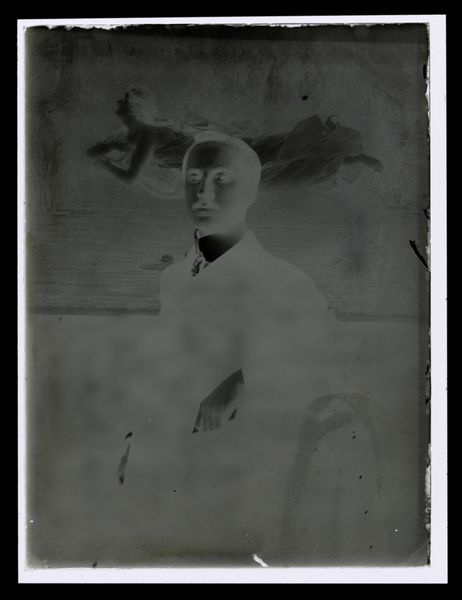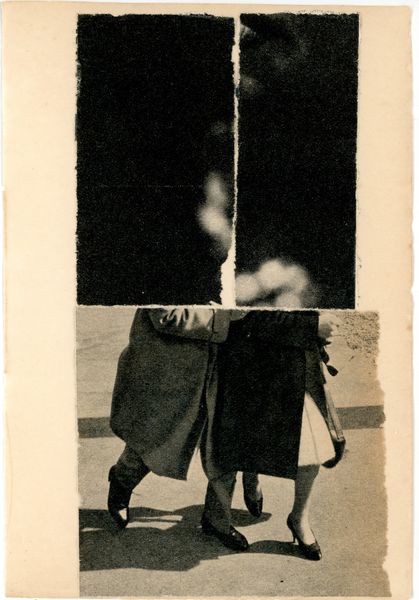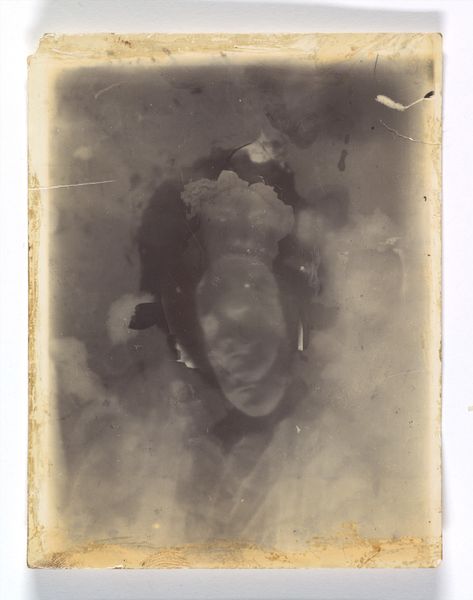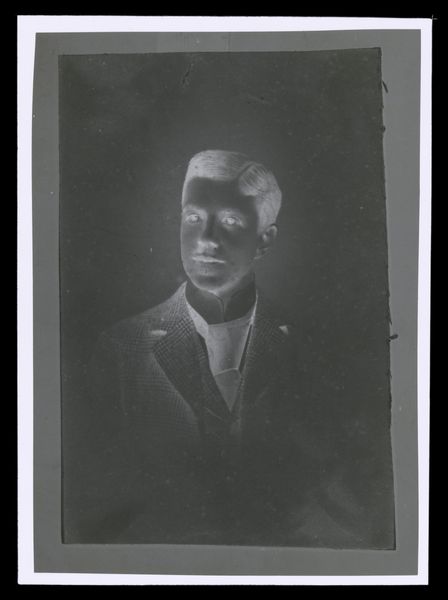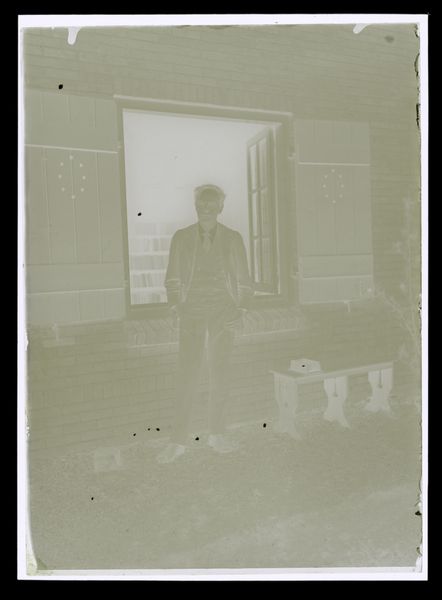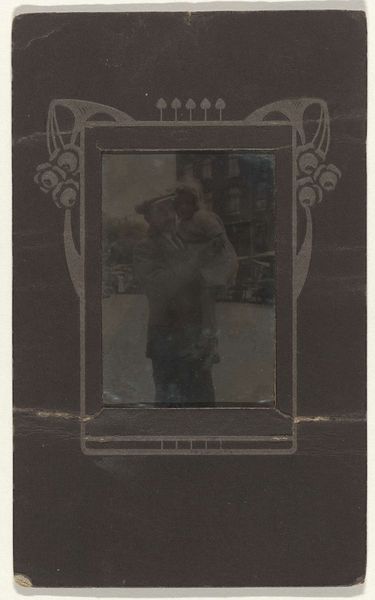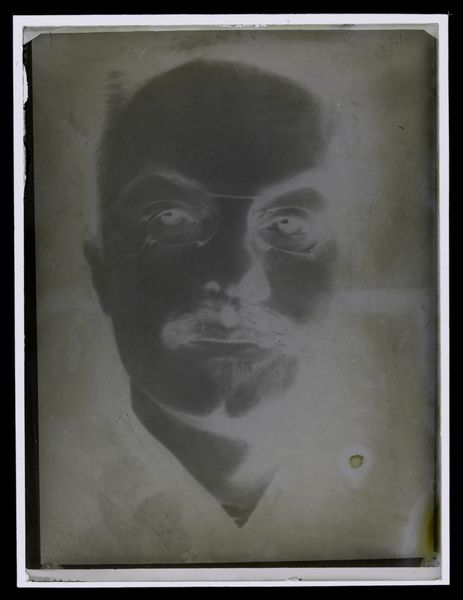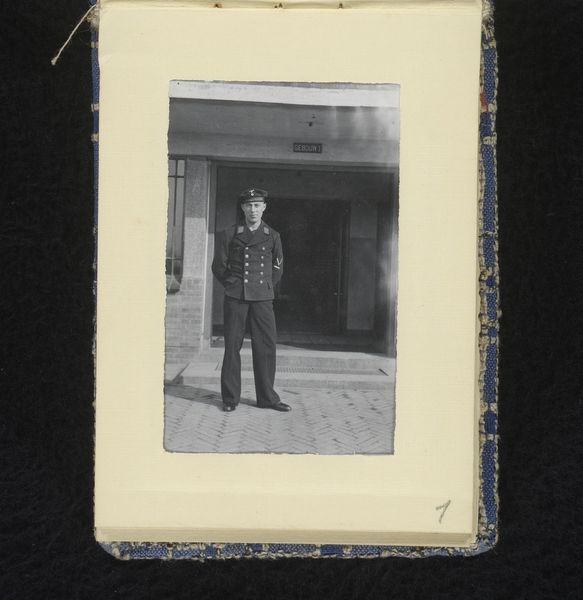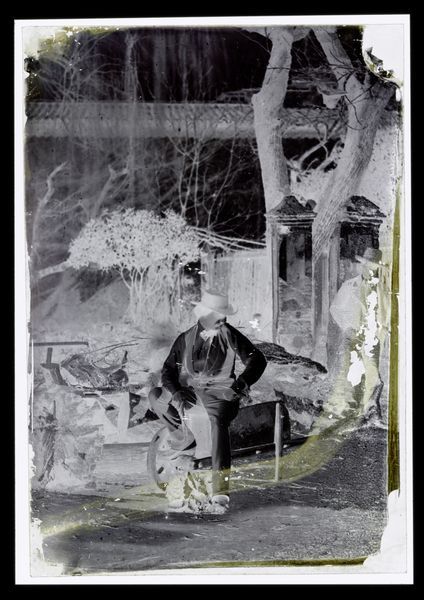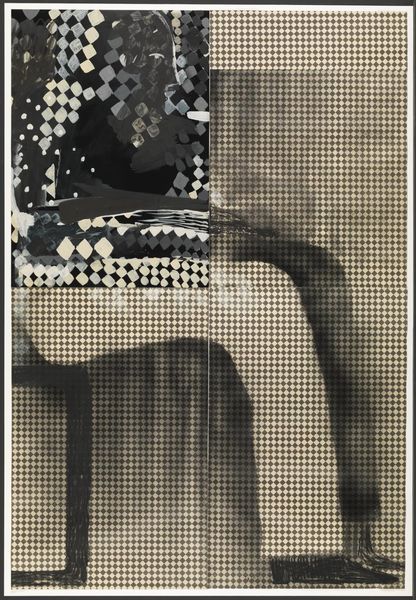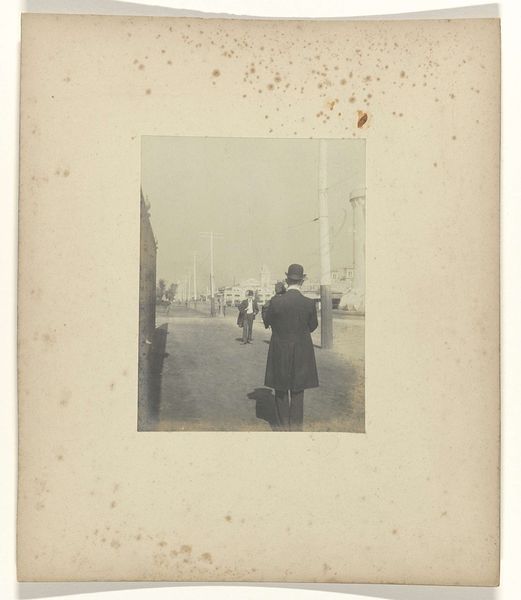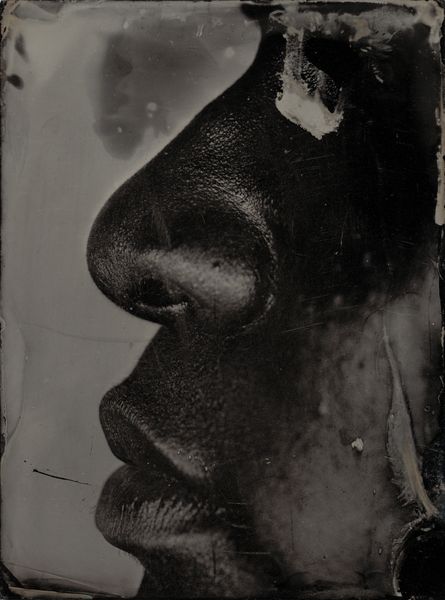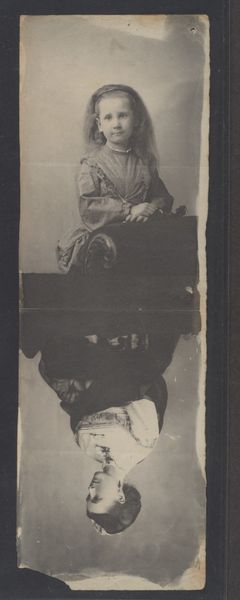
photography, gelatin-silver-print
#
photography
#
gelatin-silver-print
Dimensions: height 114 mm, width 74 mm
Copyright: Rijks Museum: Open Domain
Curator: Here we have a gelatin-silver print titled "Portret van een man," created by the Chicago Ferrotype Co., dating roughly between 1911 and 1925. Editor: It's wonderfully moody, almost spectral. The composition feels quite immediate, with a man in a suit standing in what looks like a field. The tonal range is so limited, lending a real sense of bygone times, don't you think? Curator: Absolutely. Considering its origin as a ferrotype print, the photograph speaks volumes about the democratization of portraiture during that period. Ferrotypes, also known as tintypes, were a very accessible form of photography for working-class individuals. These portable studios, like the Chicago Ferrotype Co., allowed for quick and affordable portraits. Editor: Yes, thinking about the materials, that very directness of process is important. It sidesteps the elite circuits of artistic production. What were the social factors behind their increasing popularity, do you think? Was there an appetite for self-representation by individuals from lower socio-economic backgrounds? Curator: I would say certainly yes. The rise of industrialization and urbanization saw a surge in people wanting to document their place in this new world. Moreover, the speed of the process – a finished photograph within minutes – contributed to its accessibility. But it's also interesting to note how these images were consumed and preserved – as personal mementos or even as forms of social currency. How they allowed access to imagery. Editor: Indeed. I keep coming back to this image's shadowy quality. It emphasizes how the democratization of image production allows for nuance. It speaks of aspirations toward the respectability suggested by a formal portrait, as well as its economic attainability through cheap labour. What lasting impact did places like the Chicago Ferrotype Co. have on our access to and understanding of photographic imagery today? Curator: The legacy of companies such as the Chicago Ferrotype Co. is their democratizing effect. They significantly broadened participation in image-making and consumption, which paved the way for further innovations in photographic technology and accessibility. Editor: It also emphasizes photography’s potential as evidence of the presence and visibility of previously excluded or disenfranchised populations. It makes you consider questions around class, documentation and historical narrative. Curator: Precisely. The simple fact that it survived as a found photograph, offering insights into the world of both maker and subject is the enduring interest here for me. Editor: A powerful testament to a particular social moment caught in the flux of great societal shifts through relatively available technological progress. Thank you.
Comments
No comments
Be the first to comment and join the conversation on the ultimate creative platform.
